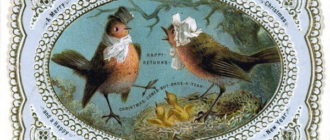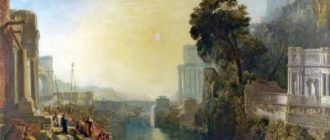
Painting Old Fisherman Chontvari (Csontváry Kosztka Tivadar) interested the general public only a few years ago, although the picture appeared back in 1902. The canvas, hanging on the wall of the museum for many decades, suddenly attracted the attention of one of the employees. The worker looked at the “Old Fisherman” painted by Chontvari for a long time, trying to unravel the artist’s intention. And, finally, I understood.
The secret of the “Old Fisherman” painting by Chontvari turned out to be simple: if you visually divide the painting in half vertically and attach a mirror perpendicular to the border, then two separate plots open up before the viewer at once. On one side, God is depicted sitting in a boat against the backdrop of a cozy seascape. The second part of the picture is occupied by a gloomy devil, around whom the high waves of the raging sea rise.

About the artist
As soon as they don’t call the picture of the “Old Fisherman” – a mystical work, a picture with a double bottom, a philosophical riddle, a vision. To understand better, let’s study the life story of the author, a self-taught Hungarian artist, Tivadar Kostka, who signs his works with the name Chontvary.
He was born in the family of a village pharmacist, received his primary education in his native village, and then moved to Uzhgorod, where, after graduating from high school, he got a job as an assistant to a trader. Then Tivadar, who had always been drawn to pharmacology, entered the university in Budapest, studying pharmacy and law at the same time. After graduation, the guy got a job in a pharmacy.
One autumn day in 1880, Tivadar looked out the window, and, taking a form and a pencil in his hands, drew a cart passing by the building. This was the decisive moment. Tivadar went to travel. He visited different cities of Europe, including the Vatican and Paris, studying the masterpieces of the great masters of painting. Then he returned home, started his own business and completely immersed himself in work in a pharmacy in order to achieve material stability. Financial independence is what would allow him to freely draw and not experience problems with money. And Tivadar Kostka came to this.

About the paintings
The first full-fledged painting was created in 1893. Then an interesting time came – Tivadar again went to travel. At first he tried to study painting in Germany and France, and then, when he got tired of boring classes, Kostka went to Italy, Greece and Africa to paint landscapes. In his wanderings, Tivadar Kostka took the pseudonym Chontvari and worked in the style of expressionism, mixed with realism and symbolism.
Gradually, Tivadar Chontwari came to surrealism. Art critics believe that progressive schizophrenia led the artist to this. Although at home, in Hungary, the painter always had a reputation as a madman – he led an ascetic lifestyle, stayed away from people, behaved strangely. When communicating with others, he sometimes entered into the image of a prophet. Such was his painting – incomprehensible and surreal. During his lifetime, Kostka never sold a single painting. Even exhibitions with the works of the schizophrenic Chontvari failed to interest the viewer. And the art museum refused to accept these paintings as a gift. Tivadar Kostka went mad and died in poverty, a useless outcast.







